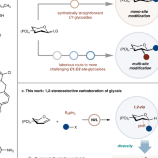
Articles
-
1 month ago |
nature.com | Yuyan Huang |Yoshikuni Yoshida |Yin Long |Liqiao Huang |Xuejie Lv |Sebastian Montagna
Urbanization and fast-paced lifestyles have shaped diverse culinary landscapes in global cities. Yet, access to sustainable dining options remains highly uneven due to complex interactions between socioeconomic systems and individual behaviors. Here we introduce an integrated framework for evaluating sustainable dining accessibility, leveraging data from 3,649 menu items and 112,892 restaurants in Tokyo, Japan. Our findings highlight a pronounced clustering of restaurants around railway stations, underscoring the pivotal role of transit-oriented development in shaping urban dining patterns. Then, a sustainable dining choice was assessed through a multidimensional approach that incorporates economic preferences, environmental impacts along the supply chain and the nutritional quality of menu offerings. Further analysis uncovers severe inequalities in sustainable dining accessibility across station vicinities, railway lines and administrative wards, with up to 9 million daily passengers exposed to unsustainable dining environments. To address these disparities, we propose targeted interventions, including optimized restaurant spatial distribution, to enhance accessibility in underserved areas. By integrating these solutions, this study offers actionable insights for urban planners, policymakers and citizens, contributing to planetary health and advancing sustainability in urban dining systems. Access to dining options is a key concern for urbanites as is, increasingly, sustainable options. This study finds dining options in the Tokyo Metropolis area clustered around railway stations and with millions of such passengers with no access to sustainable dining options.
-
Oct 21, 2024 |
nature.com | Andrew Chapman |Asuka Ishigami |Yosuke Shigetomi |Yin Long
We explored the intricate quantitative structure of household food waste and their corresponding life cycle greenhouse gas emissions from raw materials to retail utilizing a combination of household- and food-related economic statistics and life cycle assessment in Japan. Given Japan’s status as a nation heavily impacted by an aging population, this study estimates these indicators for the six age brackets of Japanese households, showing that per capita food waste increases as the age of the household head increases (from 16.6 for the 20’s and younger group to 46.0 kg/year for 70’s and older in 2015) primarily attributed to the propensity of older households purchase of more fruits and vegetables. Further, the largest life cycle greenhouse gases related to food waste was 90.1 kg-CO2eq/year for those in their 60’s while the smallest was 39.2 kg-CO2eq/year for 20’s and younger. Furthermore, food waste and associated emissions are expected to decline due to future demographic changes imparted by an aging, shrinking population after 2020 until 2040. Specific measures focused on demographic shifts are crucial for Japan and other countries with similar dietary patterns and demographics to achieve related sustainable development goals through suppressing food waste and associated emissions under new dietary regimes. Given Japan’s aging population, this study examines household food waste and life cycle greenhouse gas emissions for the six age brackets of Japanese households. Older households have higher food waste emissions than younger households.
Try JournoFinder For Free
Search and contact over 1M+ journalist profiles, browse 100M+ articles, and unlock powerful PR tools.
Start Your 7-Day Free Trial →